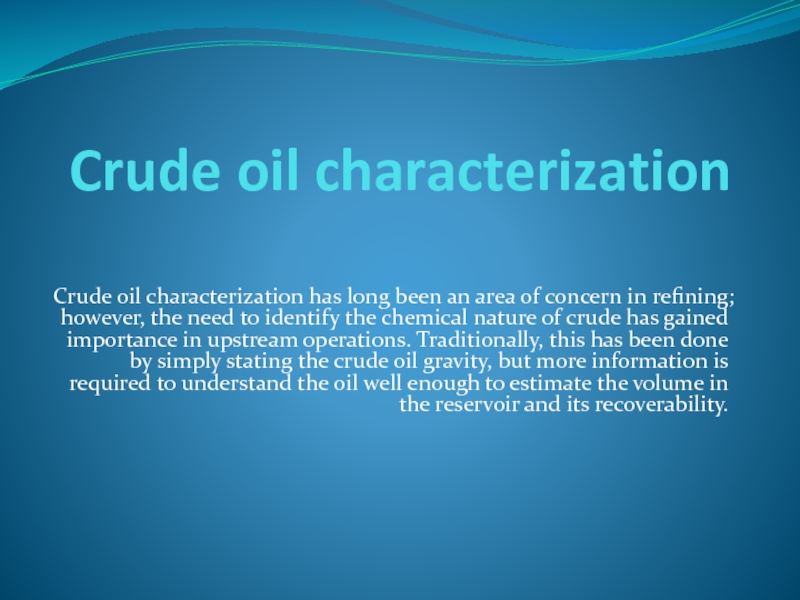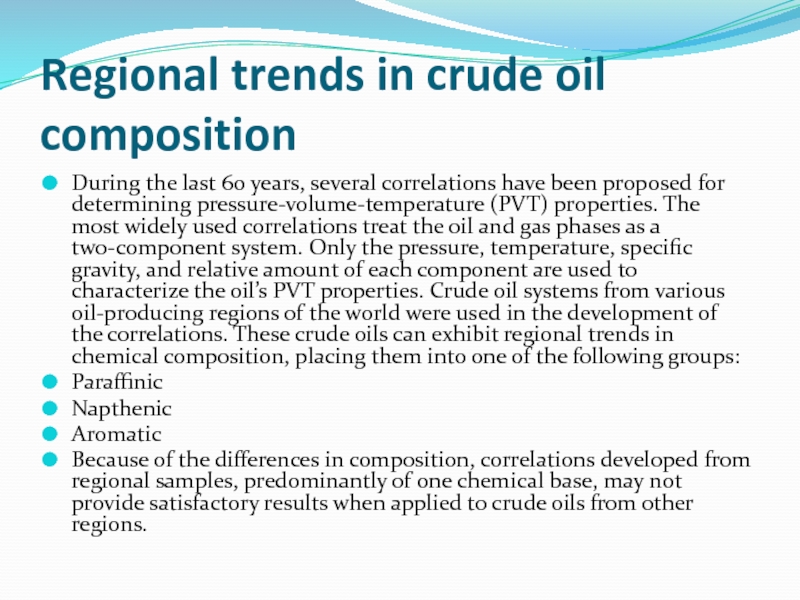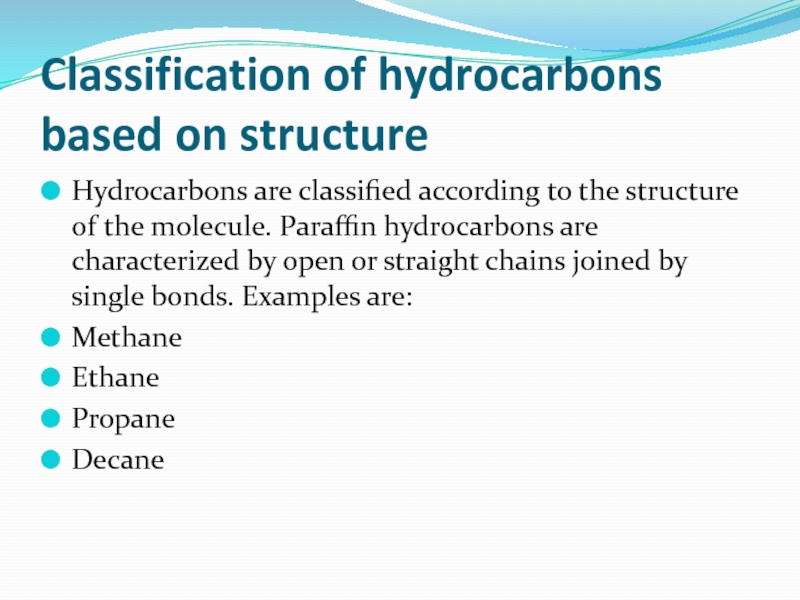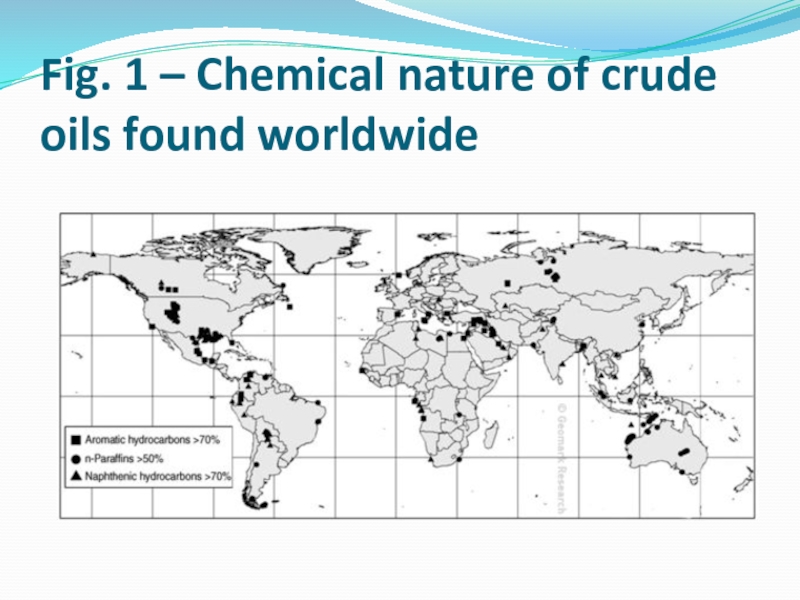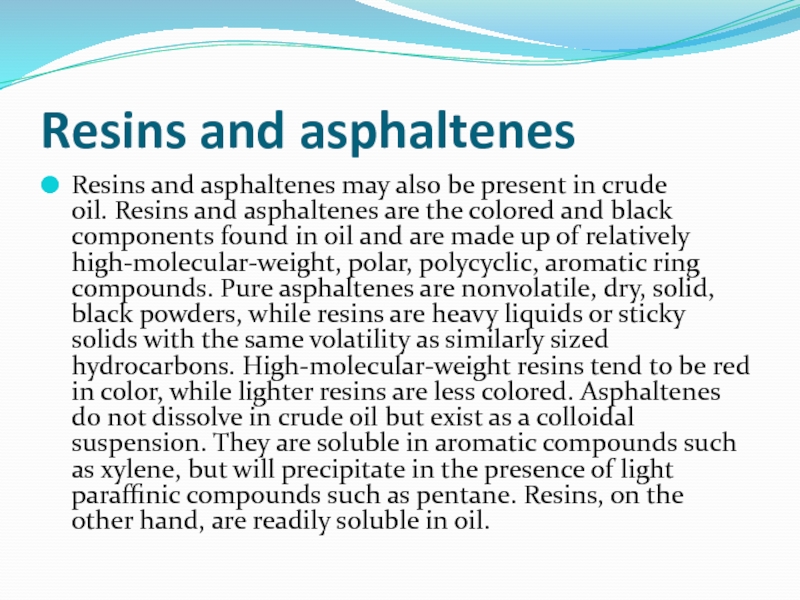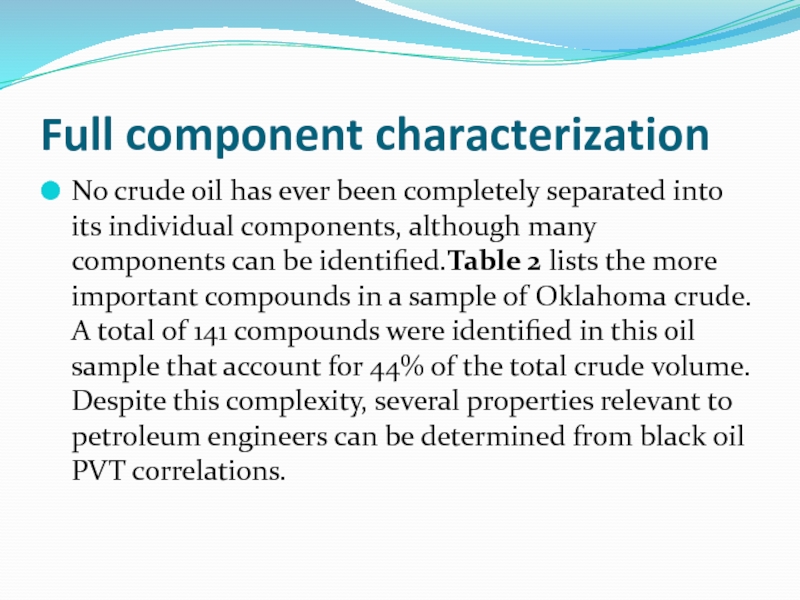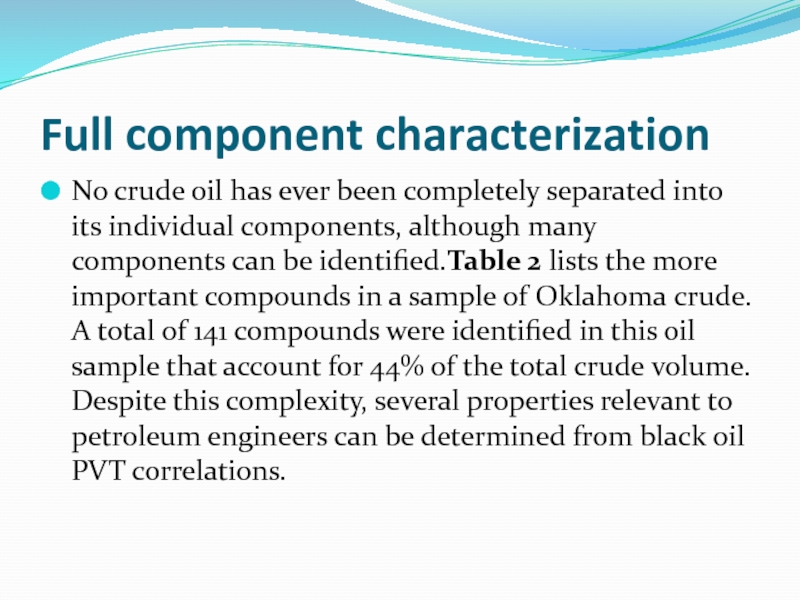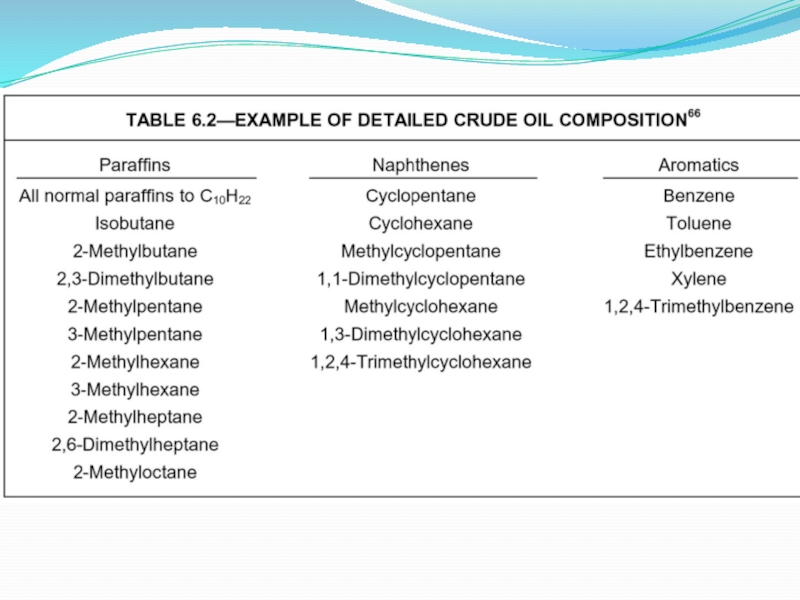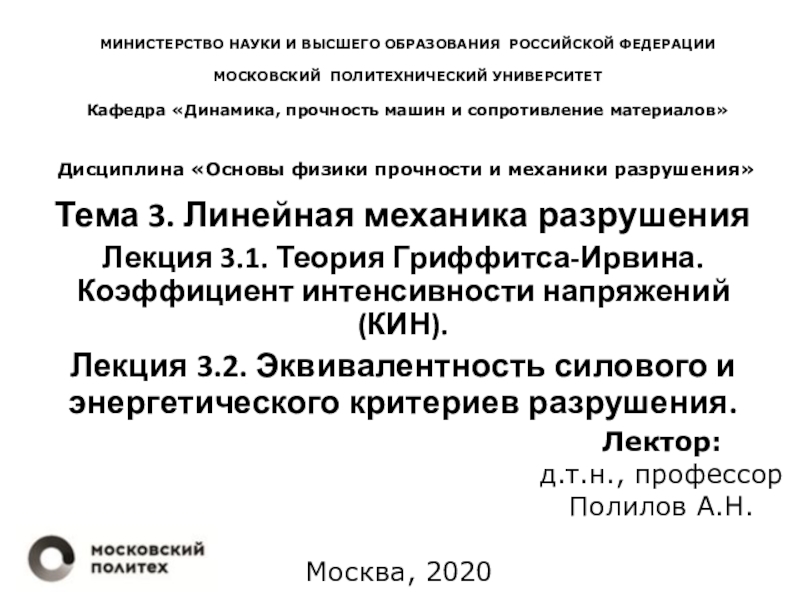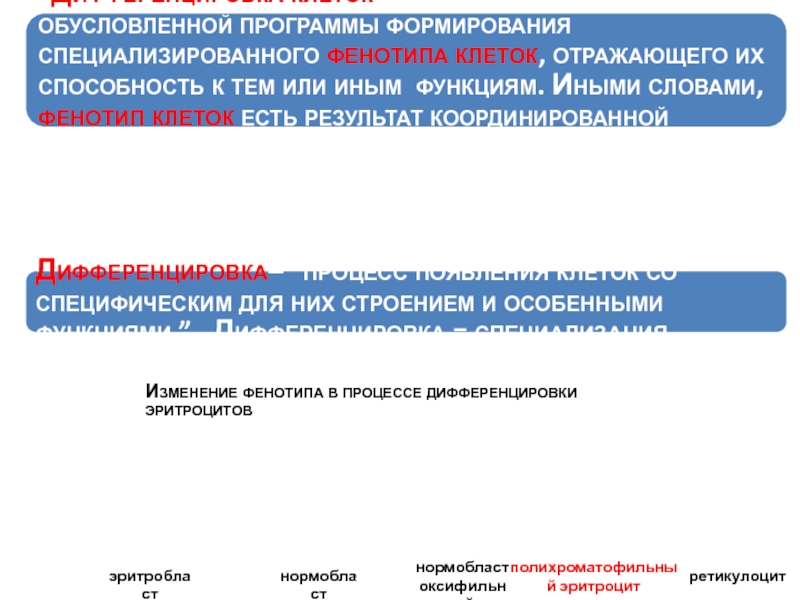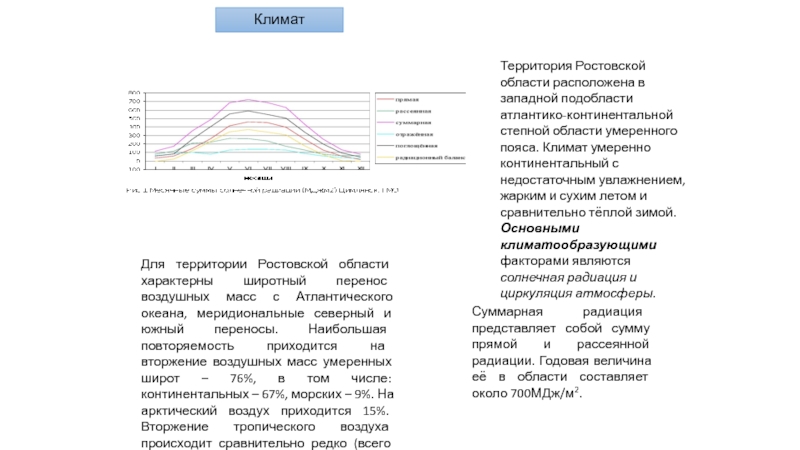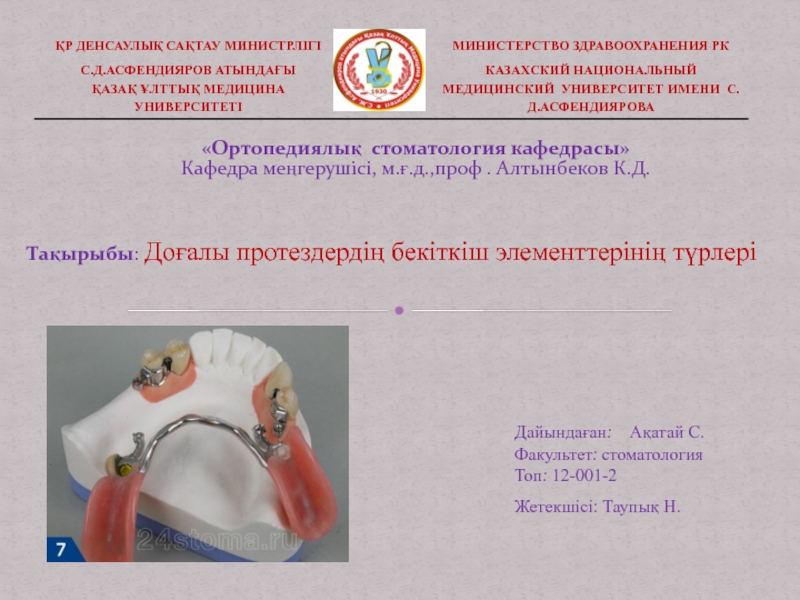Разделы презентаций
- Разное
- Английский язык
- Астрономия
- Алгебра
- Биология
- География
- Геометрия
- Детские презентации
- Информатика
- История
- Литература
- Математика
- Медицина
- Менеджмент
- Музыка
- МХК
- Немецкий язык
- ОБЖ
- Обществознание
- Окружающий мир
- Педагогика
- Русский язык
- Технология
- Физика
- Философия
- Химия
- Шаблоны, картинки для презентаций
- Экология
- Экономика
- Юриспруденция
Crude oil characterization
Содержание
- 1. Crude oil characterization
- 2. Regional trends in crude oil compositionDuring the
- 3. Classification of hydrocarbons based on structureHydrocarbons are
- 4. Fig. 1 – Chemical nature of crude oils found worldwide
- 5. Resins and asphaltenesResins and asphaltenes may also
- 6. Full component characterizationNo crude oil has ever
- 7. Full component characterizationNo crude oil has ever
- 8. Слайд 8
- 9. Скачать презентанцию
Regional trends in crude oil compositionDuring the last 60 years, several correlations have been proposed for determining pressure-volume-temperature (PVT) properties. The most widely used correlations treat the oil and gas phases
Слайды и текст этой презентации
Слайд 2Regional trends in crude oil composition
During the last 60 years,
several correlations have been proposed for determining pressure-volume-temperature (PVT) properties.
The most widely used correlations treat the oil and gas phases as a two-component system. Only the pressure, temperature, specific gravity, and relative amount of each component are used to characterize the oil’s PVT properties. Crude oil systems from various oil-producing regions of the world were used in the development of the correlations. These crude oils can exhibit regional trends in chemical composition, placing them into one of the following groups:Paraffinic
Napthenic
Aromatic
Because of the differences in composition, correlations developed from regional samples, predominantly of one chemical base, may not provide satisfactory results when applied to crude oils from other regions.
Слайд 3Classification of hydrocarbons based on structure
Hydrocarbons are classified according to
the structure of the molecule. Paraffin hydrocarbons are characterized by open
or straight chains joined by single bonds. Examples are:Methane
Ethane
Propane
Decane
